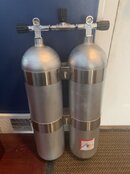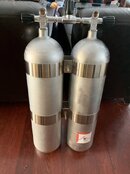tmassey
Contributor
That's the general consensus. I just wish I could find a published manufacturer's spec as confirmation!OMS tanks were made by Faber and rebadged. I can't remember all of the names, but the OMS tanks were usually called something slightly larger than the Faber/BlueSteel tanks. Like Faber LP108s are the same as OMS 112s. OMS125s are the same as Faber/Blue Steel LP121s.






